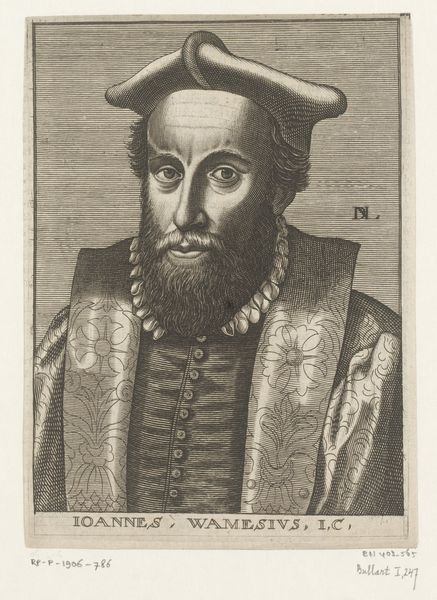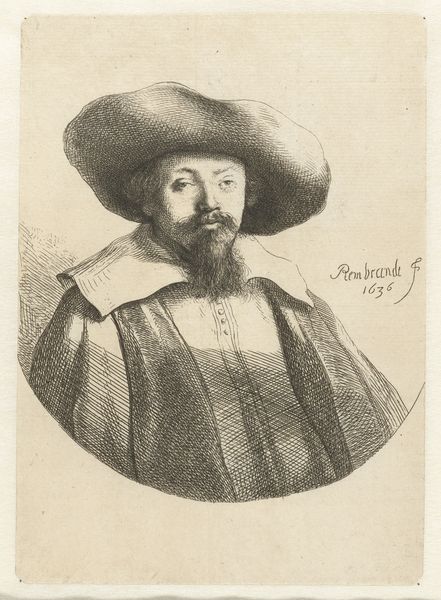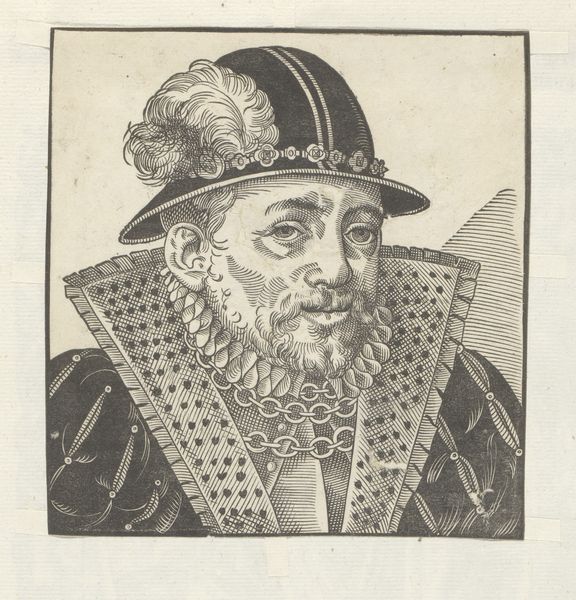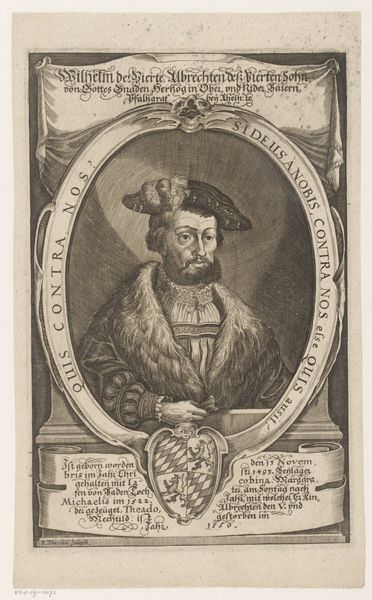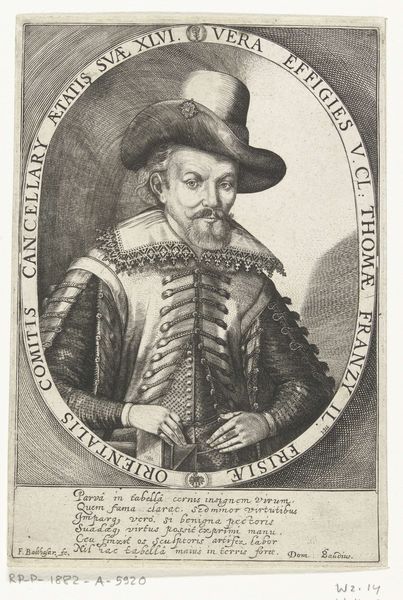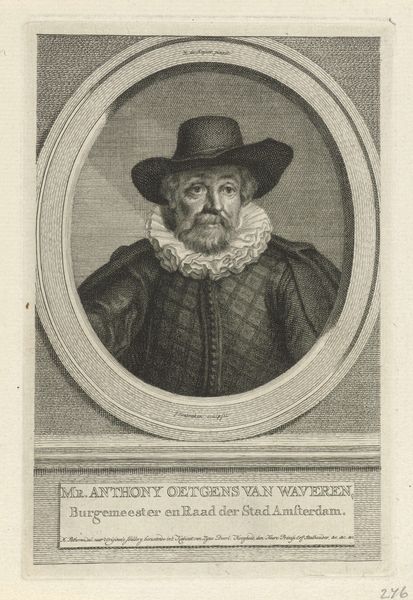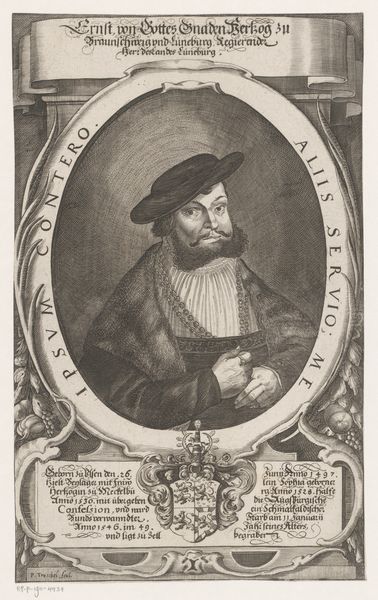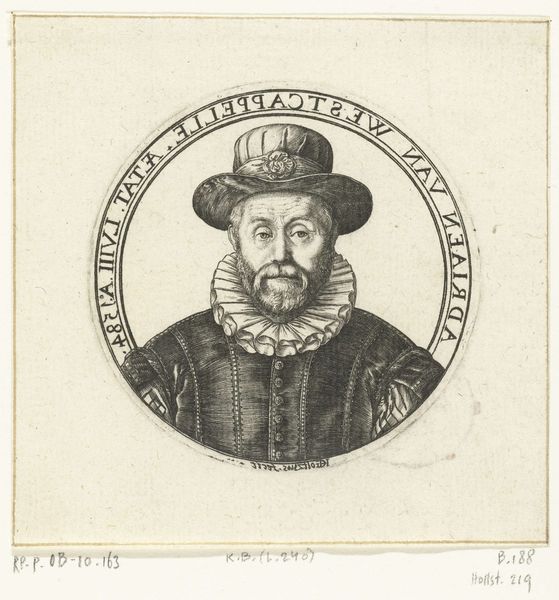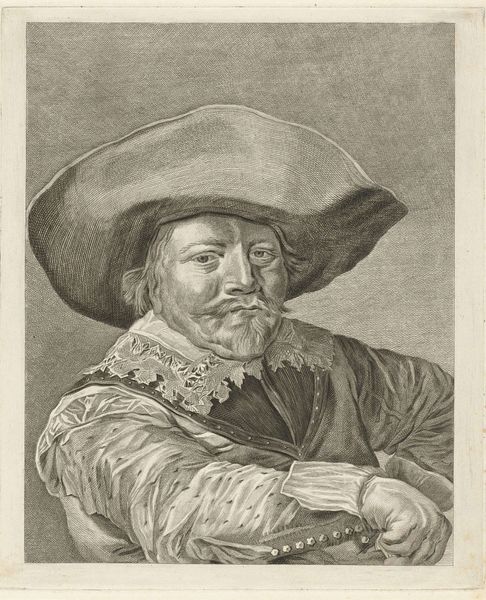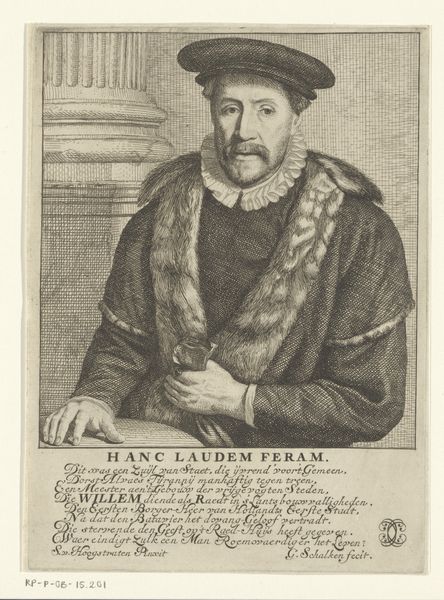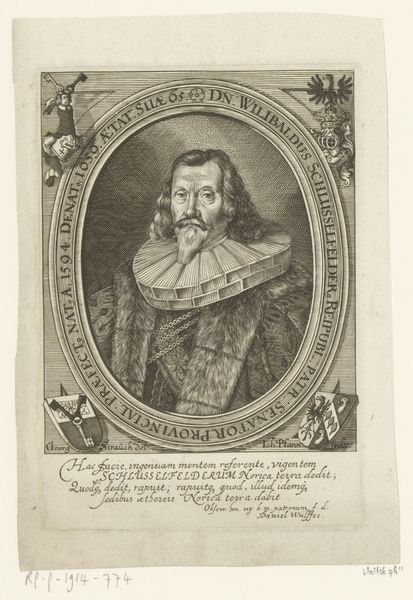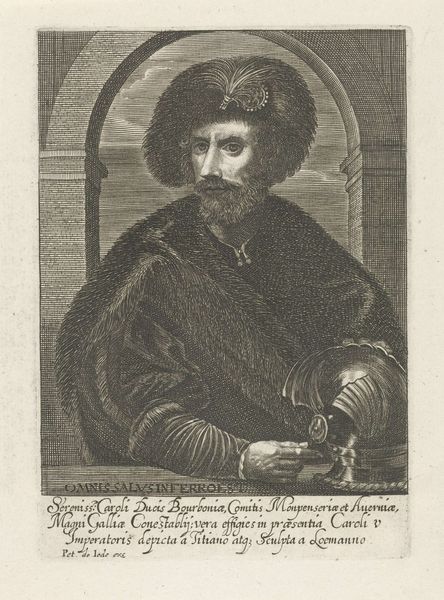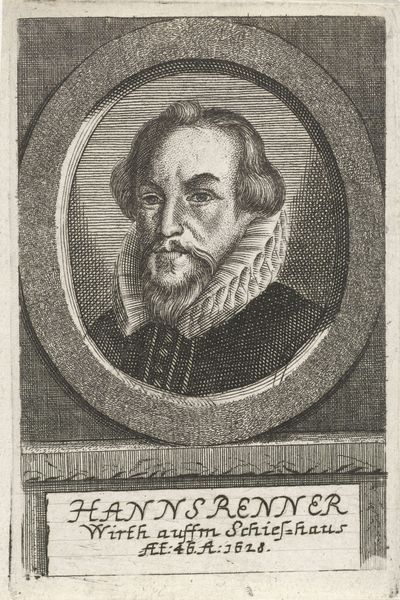
engraving
#
portrait
#
aged paper
#
toned paper
#
baroque
#
old engraving style
#
portrait reference
#
portrait drawing
#
history-painting
#
engraving
#
realism
Dimensions: height 188 mm, width 138 mm
Copyright: Rijks Museum: Open Domain
Curator: Nicolas de Larmessin I created this engraving, titled "Portret van Girolamo Fracastoro," in 1682. Editor: It’s an image that conveys a certain stoicism; the direct gaze and firm set of the mouth suggest a man accustomed to being taken seriously. Curator: Precisely. This is a portrait of Girolamo Fracastoro, a highly regarded Italian physician, astronomer, and scholar of his time. The image carries the weight of Fracastoro’s intellectual legacy and conveys an aura of authority. Editor: Absolutely, and in terms of symbolic messaging, his luxurious fur-lined robes denote his social status and wealth. It emphasizes the exclusive intellectual circles to which he belonged and how access to knowledge during this era was often determined by class and patronage. Curator: Consider how the engraver has skillfully used lines to create a sense of depth and texture, the face bearing many wrinkles, hinting at experience and wisdom—all very powerful signifiers in Baroque portraiture. Even the paper itself, now toned with age, contributes to the feeling of historical gravitas. Editor: Yes, it’s almost as if the physical aging of the paper mirrors Fracastoro’s own temporal journey. It raises questions about the perpetuation of historical narratives: Who gets remembered, and what power structures contribute to that remembrance? The portrait risks becoming an uncritical celebration of elite figures. Curator: But isn’t that inevitable in portraiture of this era? Its purpose was often to immortalize individuals and present them in a light that upheld their status. The symbols in this portrait aren’t necessarily celebrating wealth; they may equally reflect his significant contributions to medicine. His theories about contagion, for example, were revolutionary. Editor: Perhaps, but we can still read critically the embedded messages of power. Thinking about his medical contributions, to what extent did societal biases impact whose health was valued? How does his legacy of scientific discovery intertwine with existing power dynamics? Curator: Those are very important considerations to contextualize our understanding. Looking at the image, I'm reminded of the enduring power of portraiture to both celebrate and mythologize historical figures. Editor: And to critically examine those celebrations! Thinking through the historical conditions that made Fracastoro's work possible is essential. We've only scratched the surface here, but the dialogue allows us to unpack how we should consider Fracastoro's portrait in a modern context.
Comments
No comments
Be the first to comment and join the conversation on the ultimate creative platform.
